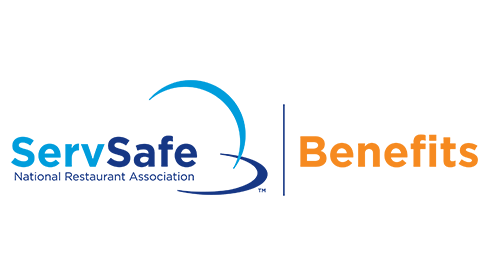Recognizing the Function of a ServSafe Food Handler in Ensuring Food Safety Criteria
Recognizing the Function of a ServSafe Food Handler in Ensuring Food Safety Criteria
Blog Article
Comprehensive Food Handlers Educating for Health and Security
In today's quickly advancing food solution landscape, comprehensive food trainers training has become an important component for making sure health and security. By instilling essential practices connected to hand health, food storage, and hygiene, this training not just mitigates the risk of foodborne diseases but additionally enhances compliance with regulatory requirements. The ramifications of such training prolong past simple conformity; they discuss public health and consumer trust fund. Yet, the performance of these training programs can differ considerably. What aspects truly determine their success in promoting a society of safety?
Value of Food Safety And Security Training

Furthermore, food security training assists to ensure that employees are aware of existing guidelines and standards, which are vital for keeping operational licenses and avoiding pricey charges. Normal training sessions additionally function as a platform for enhancing ideal techniques, thus reducing the chance of human mistake, which typically works as a leading root cause of food contamination.
Additionally, buying food safety and security training can boost a facility's track record, as customers increasingly focus on eating experiences that show high safety requirements. Such proactive measures not only protect consumers yet also add to the lasting success of food companies. In recap, extensive food safety training is an indispensable component of food solution procedures, straight influencing both public health and wellness and service sustainability.
Key Principles of Health
Preserving high requirements of health is crucial in any food managing environment to avoid contamination and make certain the safety and security of consumers. The essential concepts of health incorporate numerous crucial methods that food trainers should constantly apply.
First, hand health is critical; food trainers should wash their hands thoroughly with soap and water prior to and after taking care of food, in addition to after utilizing the restroom or touching any kind of possibly contaminated surfaces. Equipment and surfaces should be on a regular basis cleaned and sanitized to remove microorganisms. This consists of tools, reducing boards, and counter tops, which need to be kept in a clean problem.


Correct food storage space is additionally essential; raw foods need to be stored individually from cooked or ready-to-eat products to avoid cross-contamination. servsafe manager. Additionally, preserving suitable temperature controls is crucial; disposable things should be maintained at secure temperature levels to inhibit bacterial development
Lastly, individual hygiene can not be neglected. Food handlers should wear clean apparel, usage hair restrictions, and avoid functioning when ill. By adhering to these vital principles of hygiene, food trainers can considerably decrease the threat of foodborne ailments and promote a safer dining experience for all customers.
Common Foodborne Health Problems
Although many foodborne ailments can be prevented via appropriate health and secure food handling techniques, they continue to be a significant public health concern. Foodborne microorganisms can bring about a selection of diseases, varying from moderate intestinal distress to extreme complications and also death.
Typical foodborne illnesses include salmonellosis, triggered by Salmonella bacteria, often connected to undercooked fowl and eggs. Another common health problem is listeriosis, connected with unpasteurized milk items and ready-to-eat meats, which can be particularly unsafe for expecting ladies and immunocompromised people. Norovirus, regularly contracted from infected food or surfaces, is known for its quick spread and ability to create break outs in communal settings.
Escherichia coli (E. coli) infection, notably Visit This Link related to undercooked hamburger and contaminated produce, can lead to extreme abdominal aches and kidney failure sometimes. Furthermore, Clostridium perfringens, commonly found in big amounts of food that are incorrectly kept, can cause gastrointestinal disorder with symptoms showing up soon after intake.
Recognizing these illnesses is critical for food trainers, as awareness can dramatically lower the danger of contamination and shield public health. Proper education and training are essential elements in combating foodborne diseases.
Ideal Practices for Food Handling
Effective food handling practices are vital in preventing the spread of foodborne diseases. Correct hand hygiene is important; food trainers need to wash their hands completely with soap and water prior to and after dealing with food, specifically raw meat or chicken. This basic activity dramatically minimizes the danger of cross-contamination
Second of all, preserving proper food storage temperature levels is essential. Perishable things need to be kept at or below 40 ° F(4 ° C) to hinder microbial development. In addition, prepared foods need to be maintained over 140 ° F(60 ° C) up until served.
Third, ensuring sanitation of surface areas and tools is vital. Frequently sterilize kitchen counters, cutting boards, and tools, especially after preparing raw foods. Use separate cutting boards for raw and ready-to-eat foods to further minimize contamination risks.
In addition, when preparing food, it is crucial to comply with the concept of "first in, first out" (FIFO) to handle supply properly and reduce putridity. Finally, always adhere and read to foodstuff labels for risk-free cooking temperature levels and handling guidelines. By executing these finest techniques, food trainers can considerably enhance food security and safeguard public wellness.
Applying a Safety And Security Society
Creating a safety society within a food dealing with setting is important for promoting a commitment to food safety amongst all staff participants. This culture emphasizes the importance of food safety and security as a shared obligation, urging staff members to prioritize health techniques constantly.
To apply a security culture, organizations should start by providing comprehensive training that deals with food handling protocols, possible risks, and the importance of personal health. Training sessions ought to be interactive and tailored to the details duties of employee, guaranteeing relevance and engagement.
Furthermore, leadership plays a critical function in establishing this society. visit the website Administration needs to design risk-free techniques and connect the significance of food safety and security frequently. Identifying and compensating workers who promote safety and security requirements can even more reinforce these behaviors.
Furthermore, open interaction networks have to be developed, permitting personnel to report safety and security issues without fear of effect. Regular safety audits and responses sessions can aid determine areas for renovation and enhance liability.
Ultimately, growing a safety and security culture not just improves compliance with food security laws yet also shields public health, fosters employee morale, and adds to the general success of the food dealing with establishment.
Verdict
To conclude, thorough food handlers training plays a crucial role in promoting health and security within food solution facilities. By furnishing employees with essential expertise concerning food security principles, typical foodborne diseases, and ideal practices for taking care of food, such training dramatically reduces wellness risks. Moreover, fostering a culture of safety improves the establishment's online reputation and aligns with consumer expectations for high safety criteria, ultimately adding to public health protection and the general success of the food service industry.
In today's swiftly developing food solution landscape, comprehensive food trainers training has emerged as a vital part for making sure health and security.Food safety and security training is essential for maintaining high criteria in food handling and prep work, with research studies suggesting that proper training can reduce foodborne illnesses by up to 30%. In summary, extensive food safety and security training is an indispensable element of food service operations, directly influencing both public wellness and service sustainability.

Report this page